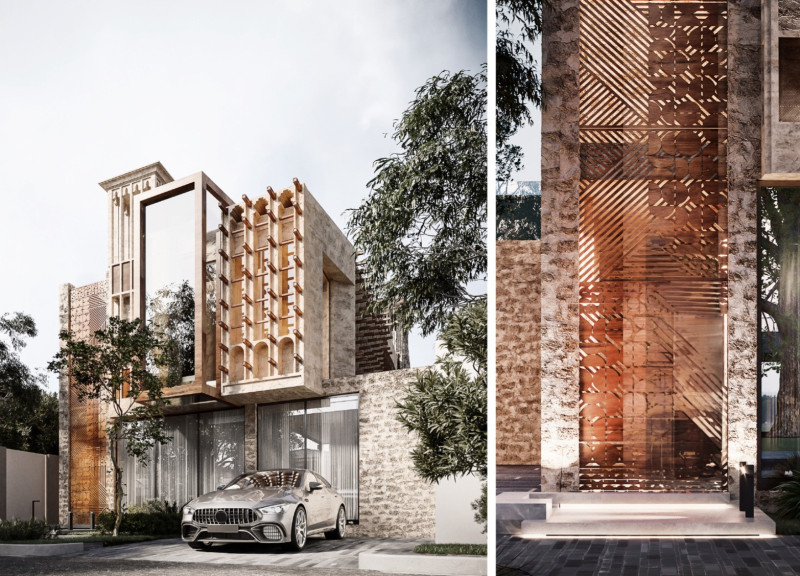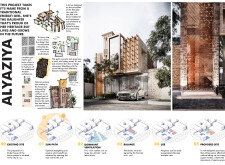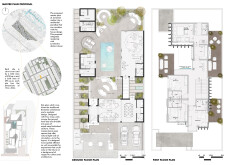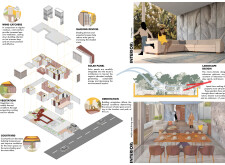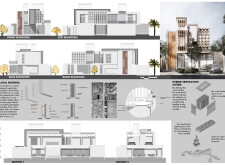5 key facts about this project
## Overview
Alyaziya is a residential project located in Dubai, United Arab Emirates, embodying a blend of traditional Emirati culture and contemporary architectural practices. The design reflects local heritage and climate considerations while integrating sustainable principles relevant to modern living. This project demonstrates an evolution within Dubai's architectural landscape, focusing on both aesthetic appeal and functional performance.
## Architectural Form and User Experience
The design features a series of staggered blocks, thoughtfully arranged to foster visual rhythm and enhance both privacy and community interaction. This spatial configuration emphasizes a balanced approach, where public and private areas are distinctly defined yet remain interconnected. Vertical elements, such as wind catchers, serve a dual purpose by enhancing natural ventilation and contributing to the building's modern silhouette. The internal layout promotes fluidity and adaptability, allowing spaces to serve multiple functions, which enhances usability while preserving openness.
## Materiality and Sustainability
The material selection highlights both local heritage and contemporary needs. Coral stone, utilized for its energy-efficient properties, anchors the design to the region's architectural past while providing aesthetic value. Concrete offers structural resilience, while strategically placed glass elements facilitate natural light and create a seamless connection with the outdoors. Wood, notably in the mashrabiya screens, adds warmth and cultural significance to the façade.
Sustainable design strategies are integral to the project. Natural ventilation through wind catchers allows for passive cooling, while solar panels harness the region's abundant sunlight. Shading devices mitigate overheating, promoting comfortable indoor environments while reducing reliance on mechanical air conditioning. Additionally, polystyrene boards ensure thermal insulation, aligning with modern energy-efficient practices. The overall design encapsulates a commitment to sustainability, responding to the climatic challenges of the desert environment.


